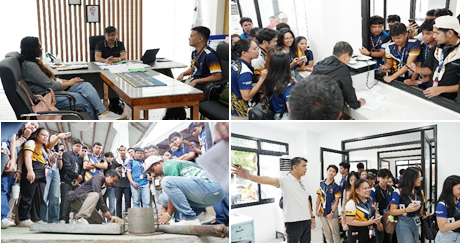Globe has taken another decisive step in its journey toward sustainable operations through a partnership with AC Mobility, marking the rollout of 20 Hybrid Electric Vehicles (HEVs) for its Field Sales Service Vehicles (FSSVs) by end-2025. The ceremonial launch highlights Globe’s plan to transition nearly 500 vehicles in its fleet to hybrid or fully electric models by 2028.
The move will avoid an estimated 5 million kg of carbon emissions equivalent over the estimated 5-year useful life of the vehicles and generate at least P100 million in fuel savings. Beyond compliance with the Electric Vehicle Industry Development Act (EVIDA), the initiative positions Globe as one of the country’s first major companies to make a substantial commitment to fleet decarbonization.
“Hybrid EVs are not just more efficient to operate and maintain, they also allow us to significantly reduce our carbon footprint,” said Globe President and CEO Carl Cruz. “This roadmap is a powerful example of how a strong business strategy can go hand in hand with environmental responsibility. With partners like AC Mobility and BPI Tokyo Century by our side, we are showing that meaningful change is possible.”
For AC Mobility CEO Jaime Alfonso Antonio Zobel de Ayala, the partnership represents leadership in action. “Globe’s decision to electrify its fleet is not just a purchase, it is a powerful statement of leadership. This is what action looks like, not waiting for the future, but ushering it in today. At AC Mobility, we are committed to enabling this transition with BYD vehicles, charging networks, and digital platforms that make sustainability practical, scalable, and accessible.”
BPI Tokyo Century Rental Corporation President Satoshi Matsuo added: “We are proud to stand alongside Globe and AC Mobility in this important milestone. Financing plays a key role in accelerating the adoption of electrified vehicles. By making sustainable fleet options accessible and practical, we can help companies like Globe achieve their environmental goals while strengthening operational efficiency.”
Globe’s EV roadmap sets clear targets: at least 20 HEVs by 2025, 200 units by 2026, and 300 more by 2028, expanding coverage from Luzon and Visayas to Mindanao as charging infrastructure grows. The first deployment will serve Globe’s B2B Sales and Customer Management teams, with future phases extending to network operations groups.
The partnership builds on Globe’s Net Zero Roadmap, launched in 2021 when it became the first publicly listed Philippine company to have its science-based targets validated by the Science Based Targets initiative (SBTi). Globe has since launched initiatives such as converting shuttles to EVs with Global Electric Transportation (GET), supporting the Evro charging network through 917Ventures, and enabling employees to shift to electric or hybrid vehicles under its G-Evolution program.
With this new milestone, Globe reinforces its belief that sustainability and sound business can go hand in hand, creating impact for both people and the planet. (PR)







